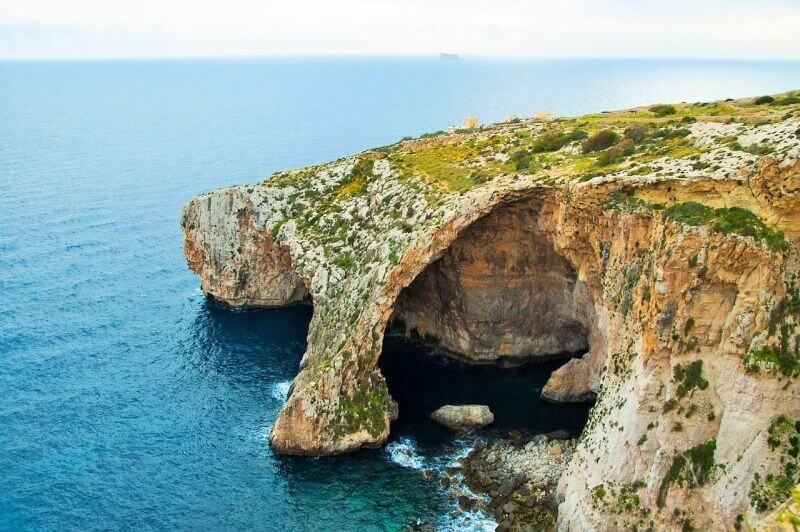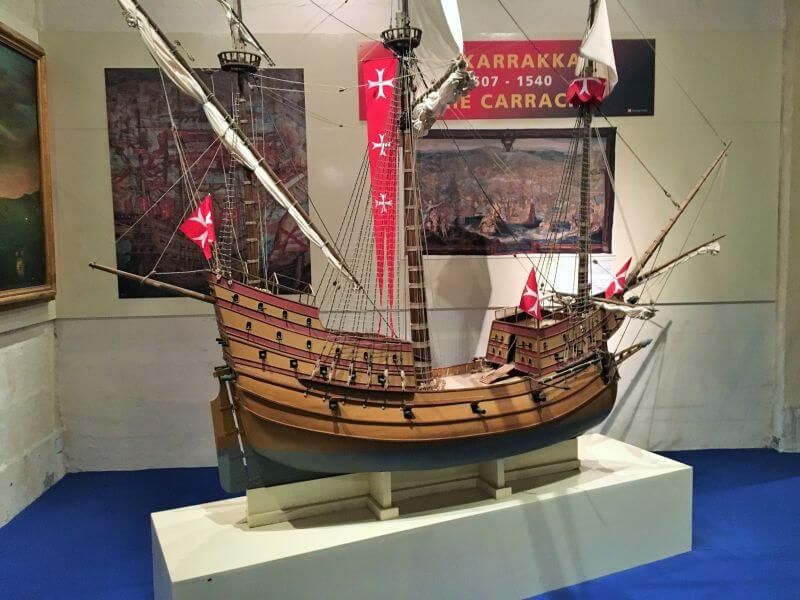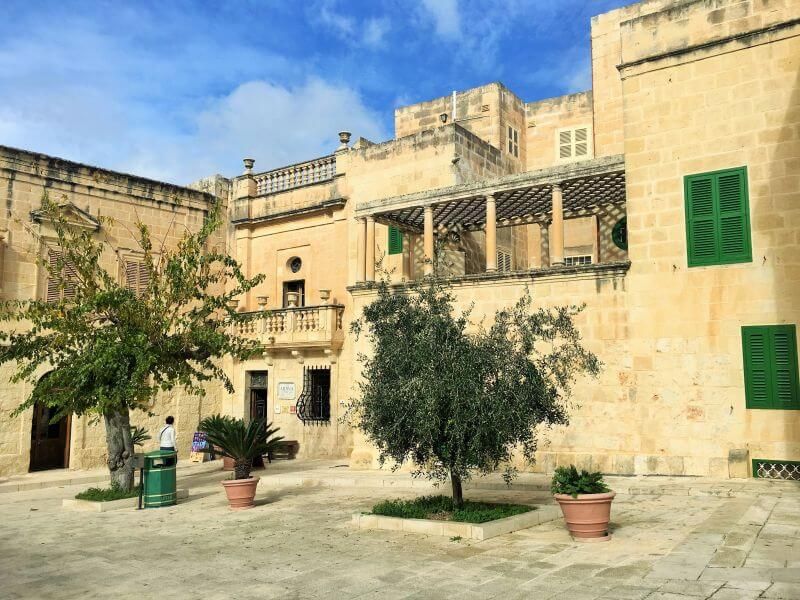Malta – this unique island has been attracting travelers with its beauty for centuries. It has a favorable climate, a strategic location in the Mediterranean Sea, a wealth of monuments, and picturesque landscapes. Currently, it attracts not only tourists but also investors and students. The latter appreciate the fact that the official language here is English, there are also many interested in summer language courses. Unemployment is very low. The fact that the island is called a tax haven contributes to this, and this attracts foreign companies. A reminder of Malta’s history is left-hand driving on Maltese streets. So what is worth seeing when we decide to spend the holidays in Malta?
1. Valletta – the capital of Malta
It is called the sunniest and southernmost town (and thus also the capital) of Europe. It is on the UNESCO World Heritage List and was awarded the title of the European Capital of Culture in 2018. Often referred to as an open-air museum due to the abundance of monuments.

What you cannot miss:
- Saint John’s Co-Cathedral – a stunning baroque church. Inside “The Beheading of Saint John the Baptist”, by Caravaggio.

- National Museum of Archaeology. There are objects found in the archaeological sites of Malta, it is worth paying attention to the figures of the Sleeping Lady and the Maltese Venus (which are estimated to be 4500-5800 years old!)
- Grandmaster’s Palace – currently the presidential palace, open to the public. Beautiful tapestries (Tapestry Room), a collection of weapons (Armoury), and in the Throne Room 12 frescoes depicting the Siege of Malta by the fleet and the army of Sultan Suleiman the Magnificent. The palace has two courtyards.
- Fort St. Elmo – now it is the seat of the National War Museum. The fort exists longer than Valletta, have been built in 1488 at the tip of the peninsula, and played an important role during the Great Siege. The museum is interactive and you can learn a lot about Malta’s history from your visit. It is also a great viewpoint.
- Lower Barrakka Gardens and Upper Barrakka Gardens – it is worth walking the entire length of Valletta’s city walls, they offer a unique panorama of the area. However, if we do not have enough strength or time, it is worth visiting the Barrakka Gardens. It is a place where you can find respite from the hot weather. On the other side of the Grand Harbor, the buildings of the Three Cities of Malta are visible. Every day at 12.00 and 16.00, Saluting Battery can be heard from the Upper Gardens.

- Church of St. Paul Shipwreck – there are relics of St. Paul (bones from his wrist, a fragment of the column on which he was beheaded). Rich, baroque interior.
If we can devote a little more time to Valletta, we can also visit Lascaris War Rooms (underground complex from World War II), Casa Rocca Piccola (a palace built in 1552, which retained the original interior; it belonged to one of the knights of the order), Manoel Theater (funded by the Grand Master, recognized as the third oldest theater in the world, still operating) or the Basilica of Our Lady of Mount Carmel (its characteristic dome stands out from the panorama of Valletta).
The best way to get to know the city is to simply get lost in its streets, discover charming squares, narrow streets, and characteristic wooden bay windows. Many people take pictures with photogenic red telephone boxes.

2. Malta – Leisure
Malta is an ideal year-round holiday destination. In summer, we can take advantage of the countless possibilities of the beautiful coast of this island. Full-day cruises to the Blue Lagoon are popular. It is a strait between the islets of Comino and Cominotto (belonging to Malta), famous for its turquoise, crystalline water. It is an ideal place for sunbathing, swimming, or diving.
- Mellieha (Ghadira) Bay – is the longest sandy beach in Malta. It is easy to reach as it is located right on the main road leading to Cirkewwa port, next to the bus stop.
- Anchor Bay – apart from the picturesque bay surrounded by rocky slopes, also offers an attraction in the form of Popeye Village. In 1980 “Popeye” movie was filmed here, starring Robin Williams as the seaman, a spinach lover. The set design remains and is a great attraction for children and adults.
- Golden Bay – a very popular beach, located right next to the large Radisson hotel. If we get bored of sunbathing, the beautiful trail Majjistral Nature and History Park begins here. You can walk along the sea to the previously mentioned Popeye Village and Anchor Bay.
- Ghajn Tuffieha Bay – if you are frightened by the crowds at the Golden Bay beach, it is worth visiting the neighboring beach. It is equally attractive (some say even more) and much less crowded. The reason is that there are about 200 stairs to climb to get to it.
- Gnejna Bay – a charming beach near the town of Mgarr. I advise against walking up the path. It is quite a dangerous place, the ground is slipping from under your feet. If we want to climb to the viewpoint or go along the trail (Gnejna-Ghajn Tuffieha-Golden-Anchor Bay), it is better to choose the path starting at the base of the tower.
Remember that the coast of Malta is not only beaches. It is worth planning time, for example, for Dingli Cliffs. Picturesquely, they rise 253 m above sea level. At the Saint Mary Magdalene Chapel, there is a bench where you can enjoy the stunning views. Also, do not miss the boat trip to the Blue Grotto. A dazzling spectacle of colors and light, crystal clear water. A cave carved in a high cliff is a place worth remembering.

For those traveling with children, an interesting option may also be a visit to the Malta National Aquarium, located on the promenade in Qawra (close to the hotel density of Malta).
3. Malta – Monuments
Malta is famous for its mysterious megalithic structures, built between 3500-2500 BC. These UNESCO-listed treasures are older than the more famous Stonehenge. The best-preserved there are, among others :
- Ħaġar Qim and Mnajdra (located relatively close to the Blue Grotto). Built just 300 meters from each other. Spectacularly situated, close to the sea (the cliff here is 60 m high), with a view of the Filfla islet.
- Tarxien – the complex of four temples is distinguished by the precision of stone sculptures. Only 5 km from Valletta, its visit can be combined with a visit to the Hypogeum of Ħal Saflieni. It is an underground structure that is now described as funerary niches, but its original purpose is not known. Booking required, admission only with guided groups, but it’s worth it! You can find out, among others that the Hypogeum construction corresponds to megalithic structures on the surface.
- Skorba and Ta 'Hagrat – are located in the villages of Mgarr and Żebbiegħ, about 1 km from each other. They are the least visited by tourists because the monuments are smaller and further from the hotel resorts (but can be reached by bus).
It is worth adding that traces of mysterious, symmetrical ruts have been discovered in Malta. They are called Clapham Junction and their function is still unknown.
Vittoriosa (or Birgu) – while in Valletta, it is worth taking advantage of the opportunity to sail around the Grand Harbor and see the magnificent city walls from the water perspective. When we have a smaller budget or limited time, we can choose a ferry cruise to Vittoriosa (belonging to the Three Cities). It runs from the waterfront under the Barrakka Gardens. You can also reach Vittoriosa by bus, but the journey is much longer and less spectacular. The city is full of treasures waiting to be discovered:
- Maritime Museum – an interesting exhibition of navigational instruments, weapons, ship models, and many other exhibits.

- Inquisitor’s Palace – the building where the Holy Office had its residence, as well as the court and the prison. Beautiful frescoes inside. The ceiling in the main hall is decorated with the wood-carved blazons of all 62 inquisitors.
- Fort St. Angelo – served, among others as a prison where the Italian painter Caravaggio was held. Previously, there were Phoenician and then Roman temples. The most important scenes of the Great Siege of 1565 took place in the fort. It served as the headquarters of the Grand Masters until 1571. A great viewpoint.
- Church of St. Lawrence – considered to be the first Maltese temple of the Knights Hospitaller, but the building dates back to the time before the knights came to the island (around 1090). On the altar, there is a painting showing the martyrdom of St. Lawrence.
4. In the footsteps of Game of Thrones
Many scenes from the first season of the popular HBO series were filmed in Malta. If you are a fan of it, it is worth taking a look at:
- San Anton Palace Gardens (Attard). It houses the residence of the President of the Republic of Malta (serial Red Keep). We can walk in the adjacent gardens – the botanical garden for free, just like the characters in the series.
- Rabat – in the monastery of St. Dominic was the Royal Gardens (the scenes were filmed mainly in the courtyard). While in Rabat, it is worth visiting St. Paul’s Catacombs. It is a large archaeological area from the early Christian period in Malta.
- Mdina – the former capital of Malta, also known as the Silent City, welcomes us with a beautiful gate, which in the series was the gate to King’s Landing. The main town square, Pjazza Mesquita, was the backdrop to Lord Baelish’s pleasure shrine. The city is exceptionally beautiful, closed to car traffic. The most valuable monuments are St. Paul cathedral, Bastion Square (overlooking the entire north of Malta), the Chapel of St. Agatha, and Palazzo Vilhena. Right outside the city walls, there is an interesting Domvs Romana Museum with valuable mosaics.


- Fort Ricasoli – often „plays” in films (Gladiator, Troy), now serves industrial purposes. It is not open for tourists. It is also relatively difficult to get there and go around it. Visible from Valletta. We can see a characteristic entrance in the series.
- Fort Manoel – The Great Sept of Baelor and the scene of Ned Stark’s execution were filmed here in the first season. Currently under renovation. A great view of the island on which the property is located is from Valletta.
5. Cuisine
- Rabbit, or fenek, is considered the national dish of Malta. Traditionally, it is marinated in wine and then fried or baked and served with lots of sauce. Its price is prohibitive for many tourists.
- Fish and seafood – supposedly the best is served in the fishing village of Marsaxlokk. Whether it is true or a marketing ploy, you have to judge for yourself. However, the place itself is charming enough to pay a visit. Colorful luzzu, traditional Maltese fishing boats, gently swing on the waves. This postcard view is often reproduced on the Internet, but it does not take away any of its charms.

- Kinnie – a carbonated drink made from bitter oranges and a special blend of herbs. The Maltese people are very proud of it, it has been produced for almost 70 years.
- Maltese Pizza – differs from the Neapolitan pizza mainly in terms of dough. It is thick and fluffy. The pizza is delicious, sold hot, in pieces, right from the window.
- Prickly pear fruit – while visiting Malta you may encounter roadside prickly pear fruit vendors. They will peel your fruit on the spot and even cut it into pieces. Inhabitants make jams and tinctures from this fruit.
And in the next post, the biggest attractions of Gozo, the second largest and densely populated island in the Maltese Archipelago.
